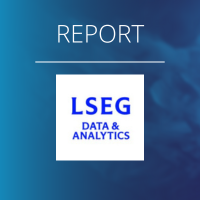Dinesh Kumar explores practical AI applications within corporate treasury, from setup considerations to tangible benefits. Read on to discover how these innovative solutions can elevate your treasury operations!
Generative AI, a subset of artificial intelligence that focuses on generating new content, predictions, and scenarios, is transforming corporate treasury operations. By analysing large datasets, learning from patterns, and simulating outcomes, generative AI can automate routine tasks, improve decision-making, and enhance risk management. Below is a comprehensive overview of how generative AI is being used in Corporate Treasury, its benefits, key applications, and the challenges it poses.
Here’s a detailed look at practical tools that leverage Generative AI in corporate treasury, along with their technical setup considerations:
1. Cash Flow Forecasting Tools
Tool: Kyriba (with AI integration)
Description: Kyriba offers treasury management solutions that incorporate AI for cash flow forecasting. It can analyze historical data and use machine learning to improve the accuracy of cash flow predictions.
Technical Setup:
- Integration: Requires API integration with enterprise ERP systems (e.g., SAP, Oracle) to access financial and transactional data.
- Data Inputs: Historical financial transactions, invoices, and payment data.
- Machine Learning Model: The platform utilizes machine learning algorithms to predict future cash flows based on historical trends and external factors (market data).
- Cloud Environment: Typically hosted on a cloud platform (AWS or Azure), so treasury teams need to configure cloud access and security protocols.
- Reporting: Dashboards for visualizing cash position and forecasts are customizable through a web interface.
2. Foreign Exchange (FX) Management Tools
Tool: FiREapps
Description: FiREapps uses AI to manage FX exposures and forecast FX rates. It can help treasury teams in managing currency risks by generating predictive models.
Technical Setup:
- Integration: API and file-based integrations with ERP and TMS systems to collect data on foreign currency exposures and transactions.
- Data Inputs: Historical currency rates, payment schedules, and market data.
- Machine Learning: Predicts currency movements by training models on historical rate data, leveraging both supervised and unsupervised learning techniques.
- Hosting: Cloud-based SaaS tool. Secure API integrations and regular data refresh from ERP systems ensure up-to-date insights.
- Dashboard: Web-based interface for real-time risk monitoring, with AI-generated alerts for rate fluctuations.
3. Investment Portfolio Optimization
Tool: BlackRock Aladdin (AI-enhanced portfolio management)
Description: Aladdin by BlackRock integrates AI to optimize corporate treasury portfolios, using machine learning to analyze market trends and propose investment strategies.
Technical Setup:
- Data Sources: Connects to multiple market data sources (e.g., Bloomberg, Reuters) for real-time investment and market data.
- Integration: API or file-based integration with your Treasury Management System (TMS) for exposure and transaction data.
- AI Model: Uses predictive analytics to simulate potential portfolio outcomes, factoring in risk tolerance and market volatility.
- Cloud Environment: Aladdin runs in a highly secure cloud infrastructure, requiring access configuration and regular data feeds from both internal (ERP/TMS) and external (market data providers).
- Reporting: Dashboards and automated reporting tools allow treasurers to visualize and track performance and risk exposure.
4. Fraud Detection and Compliance
Tool: FICO Falcon Fraud Management System
Description: FICO Falcon utilizes AI to detect fraudulent activities in payments and financial transactions in real-time, providing security and compliance for corporate treasury functions.
Technical Setup:
- Integration: Needs API or file-based integration with payment processing systems and financial transaction databases.
- Data Inputs: Transactional data, customer behavior, and historical fraud patterns.
- AI Algorithms: Uses supervised learning models to detect unusual patterns and flag potential fraudulent activities based on predefined risk criteria.
- Cloud or On-Premise: Can be deployed either in the cloud (AWS, Azure) or on-premises, depending on the organization’s security requirements.
- Alerts & Reporting: Provides real-time fraud alerts through a centralized dashboard, which treasury teams can use to review flagged transactions.
5. Liquidity Optimization Tools
Tool: SAP Treasury and Risk Management with AI-Driven Liquidity Planning
Description: SAP Treasury integrates AI into liquidity planning by generating predictive models to optimize cash positioning and funding requirements.
Technical Setup:
- ERP Integration: Direct integration with SAP S/4HANA for seamless access to all financial and transactional data.
- Data Inputs: Accounts receivable, accounts payable, external market data, and bank account details.
- AI Algorithms: Uses machine learning to generate predictive models that suggest optimal liquidity allocations and forecast short-term and long-term cash needs.
- Cloud Hosting: Hosted on SAP’s cloud infrastructure, requiring configuration of cloud access and adherence to security protocols.
- Dashboard & Reporting: Offers customizable dashboards for real-time monitoring of cash positions, liquidity levels, and forecasted cash flow.
6. Debt and Interest Rate Management Tools
Tool: Chatham Financials Debt Management Platform (AI-enhanced analysis)
Description: The Chatham Financials platform uses AI to predict interest rate movements and optimize debt structures. It provides analytics for debt refinancing, hedging strategies, and interest cost reductions.
Technical Setup:
- Data Integration: Connects to ERP and TMS systems via APIs or secure file transfers to ingest data on debt instruments and payments.
- Machine Learning: Predicts interest rate movements using AI models that factor in macroeconomic data, historical trends, and market signals.
- Cloud or On-Premises: Cloud-based system with configurable access levels for treasury departments, or on-premise deployment for organizations with stringent security needs.
- Risk Dashboard: Provides real-time monitoring of debt portfolios, suggesting optimal refinancing options and hedging strategies.
7. AI-Powered Trade Finance Tools
Tool: Citi Treasury and Trade Solutions with AI capabilities
Description: Citi’s AI-enabled trade finance platform automates the creation and validation of trade documents, helps manage letters of credit, and optimizes cross-border payments.
Technical Setup:
- Data Integration: Direct integration with global banking systems, ERP, and TMS platforms via APIs for seamless data exchange on cross-border transactions.
- AI Engine: Uses natural language processing (NLP) to scan and validate trade documents, reducing human error and speeding up trade financing.
- Cloud-Based: Hosted in a secure cloud environment, requiring bank API setups and secure data exchange protocols.
- Real-Time Monitoring: Provides AI-generated insights and alerts on trade financing activities through web-based dashboards.
8. Regulatory Reporting & Stress Testing
Tool: AxiomSL (AI-Driven Regulatory Reporting)
Description: AxiomSL integrates AI for automating regulatory reporting and conducting stress tests to ensure compliance with evolving regulatory standards.
Technical Setup:
- Data Collection: Pulls financial data from ERP systems, transactional records, and external market data via APIs or secure file transfers.
- AI Models: Uses machine learning to automate the generation of regulatory reports, stress test scenarios, and simulations based on regulatory requirements.
- Cloud Infrastructure: Runs on cloud (e.g., AWS, Azure), and requires integration with company databases and financial systems.
- Custom Reporting: Provides web-based, customizable dashboards for generating regulatory reports and conducting stress tests on demand.
Key Considerations for Technical Setup:
- Data Integration: All tools require integration with ERP, TMS, and other financial systems. Secure APIs and file-based transfers are essential.
- Cloud vs. On-Premises: Most modern AI tools are cloud-based, but some platforms allow on-premises deployments for companies with strict data security protocols.
- Security: Ensure that any tool integrated into corporate treasury follows industry best practices for encryption, data security, and compliance (e.g., GDPR, SOX).
- Customization: Most AI tools offer customizable dashboards, allowing treasury teams to tailor reporting and monitoring to their specific needs.
- Ongoing Monitoring: AI models require continuous monitoring, training, and updating to ensure accuracy and alignment with current market conditions.
By adopting these tools and considering the necessary technical setups, corporate treasury teams can greatly improve efficiency, decision-making, and risk management.
Benefits of Generative AI in Corporate Treasury
- Increased Efficiency: By automating routine processes and generating faster, more accurate reports, AI allows treasury teams to focus on strategic tasks.
- Improved Accuracy: AI’s ability to analyze vast datasets with precision reduces errors in forecasts, risk assessments, and compliance reports.
- Enhanced Decision-Making: AI-driven insights help treasury teams make more informed decisions regarding liquidity management, investments, and risk mitigation.
- Proactive Risk Management: AI enables proactive monitoring of risks such as market volatility, interest rates, and counterparty risks, allowing treasury teams to respond before they become critical issues.
- Cost Savings: Automation of routine tasks reduces labor costs, while optimization of liquidity and investment strategies maximizes returns and reduces borrowing costs.
- Faster Response to Market Changes: AI models can adjust forecasts and strategies in real-time based on market movements, providing a quicker response to opportunities or risks.
Challenges of Implementing Generative AI in Treasury
- Data Quality and Availability: For AI to be effective, it requires large volumes of clean, high-quality data. Many organizations face challenges with integrating data from multiple sources, such as ERP systems, bank accounts, and market data providers.
- Technical Complexity: Implementing AI models, particularly generative AI, requires technical expertise in data science and machine learning. Treasury teams often need to collaborate closely with IT departments or external consultants.
- Compliance and Regulatory Issues: Automated processes and AI-driven decision-making must align with












